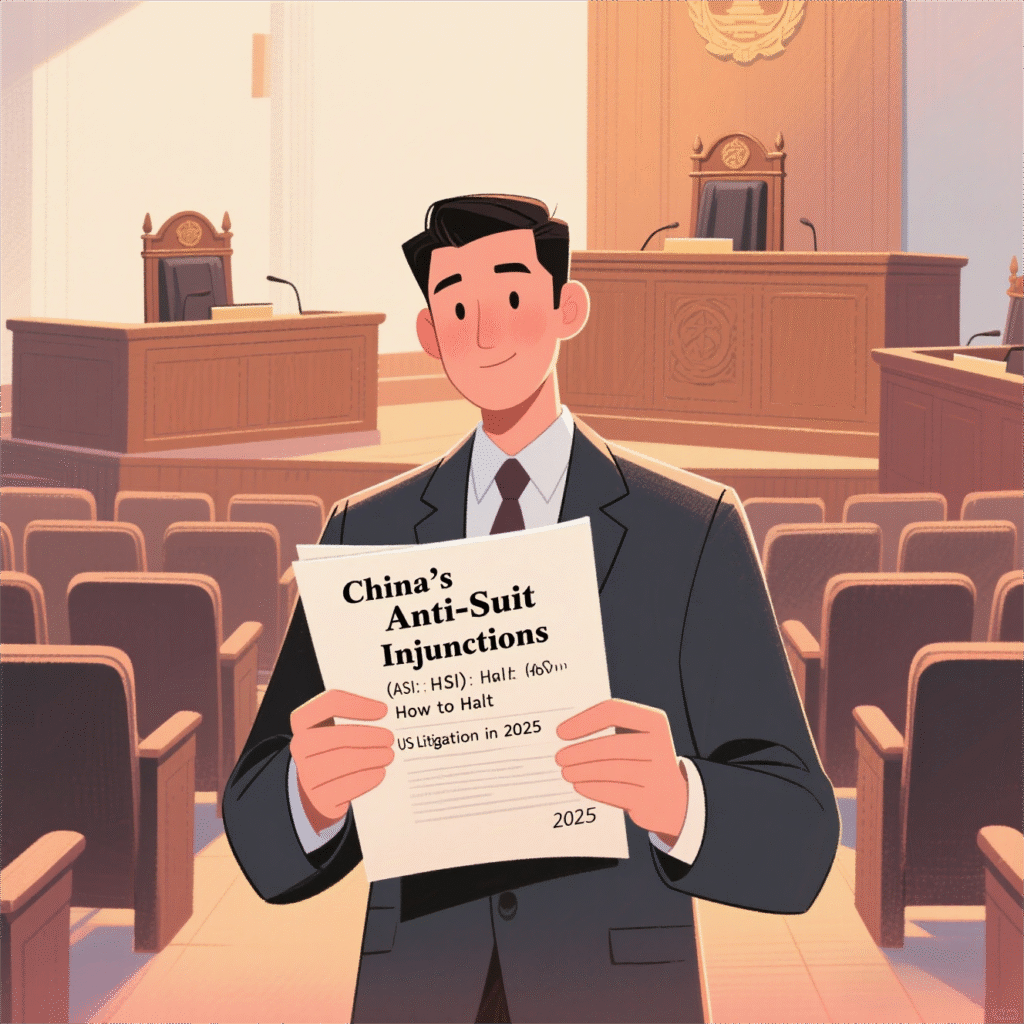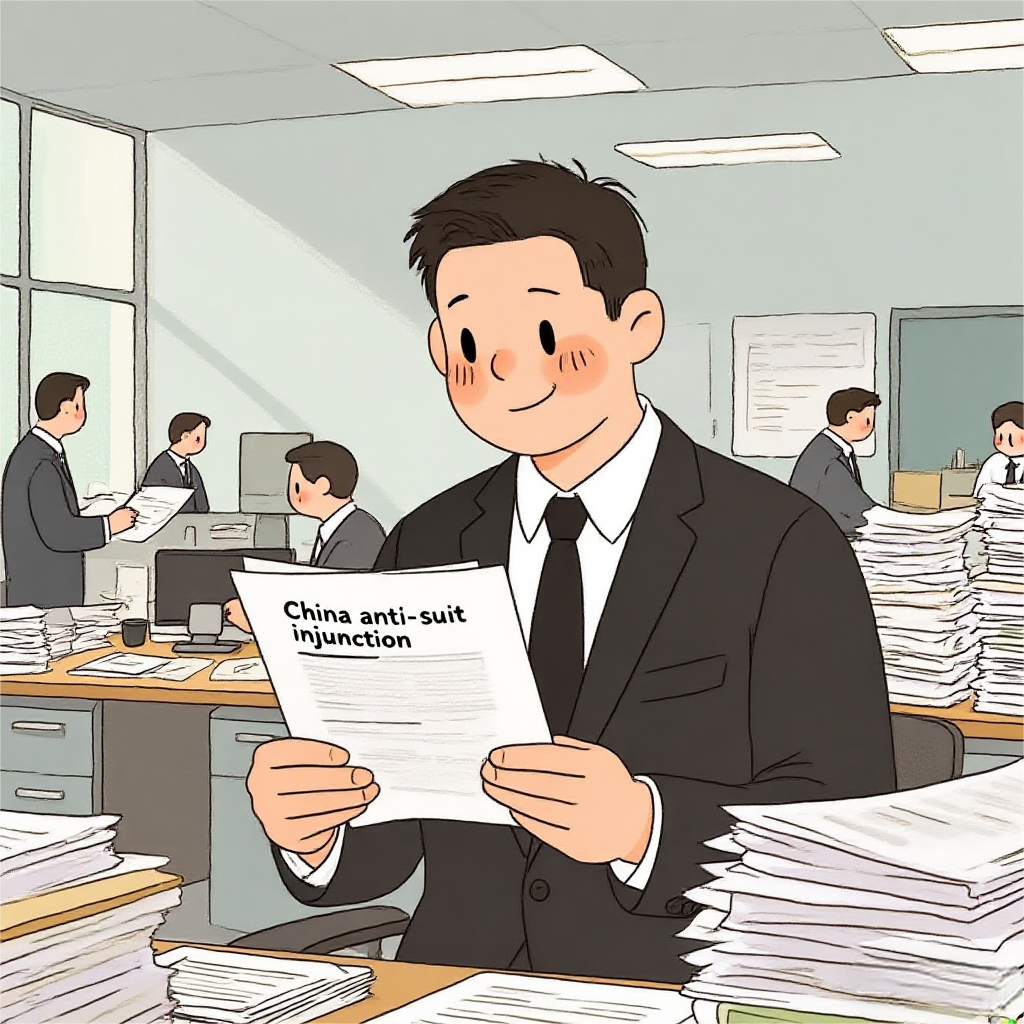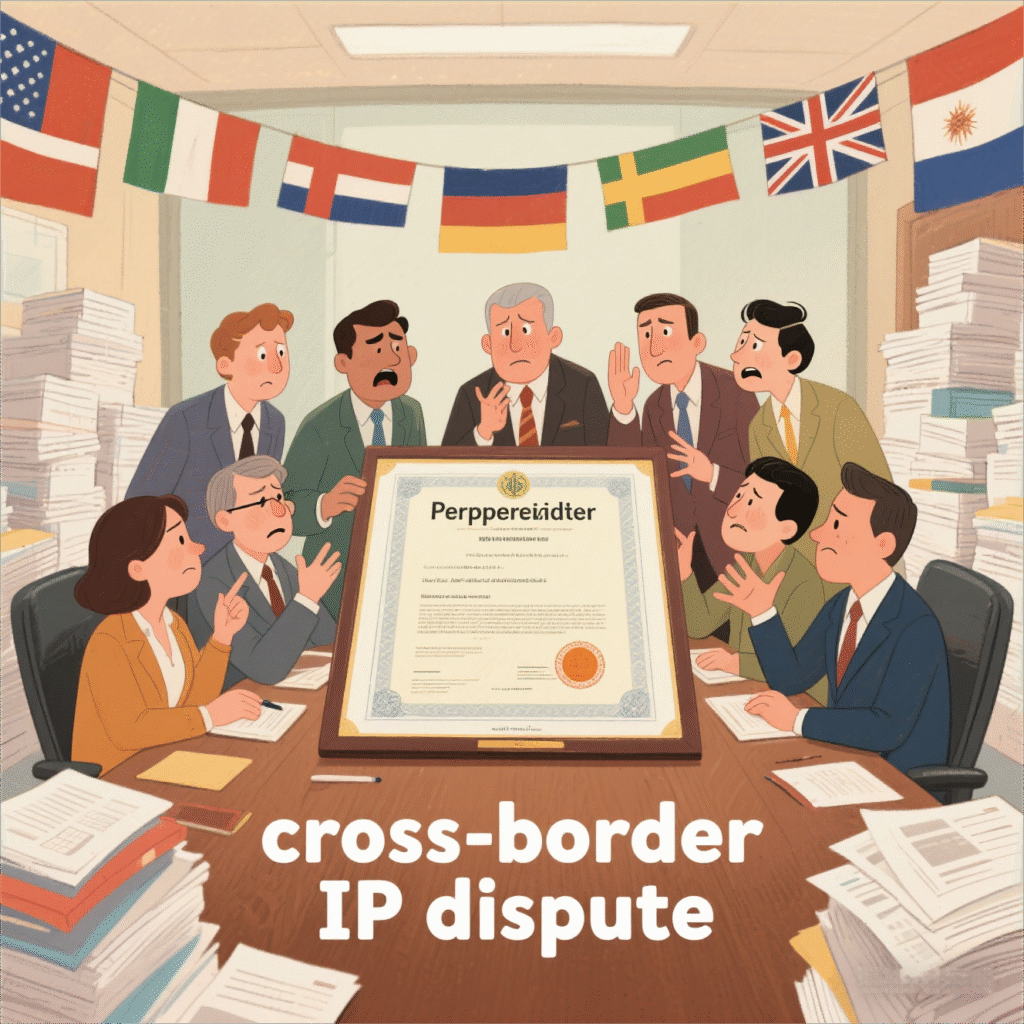
Chinese companies face 870+ annual lawsuits in U.S. courts, but China’s judiciary now offers a powerful weapon: Anti-Suit Injunctions (ASIs). Post-2024 rulings like Huawei v. Netgear and Ericsson v. Samsung empower Chinese courts to freeze U.S. litigation with fines up to ¥1M/day ($139,675). Here’s how to deploy ASIs strategically.
I. Legal Basis for ASIs in China
ASI Authority:
– Statutory Framework: ASIs fall under “Act Preservation” (xíngwéi bǎoquán) in China’s Civil Procedure Law (Article 103) and Patent Law (Article 72). Courts may order parties to “cease specific acts” (e.g., pursuing foreign litigation) if they:
– Threaten Chinese judicial sovereignty.
– Cause “irreparable harm” (e.g., disrupted negotiations or enforcement).
– Jurisdictional Grounds: Chinese courts assert jurisdiction if:
– The dispute involves Chinese patents or parties (e.g., Huawei’s Wi-Fi 6 SEPs in Netgear).
– Foreign litigation interferes with Chinese proceedings.
🛠️ II. Step-by-Step ASI Application Guide
✅ Step 1: Pre-Filing Preparation
– Evidence Collection:
– Proof of U.S. litigation (e.g., complaint, summons).
– Documentation showing “irreparable harm”: Disrupted licensing talks (Huawei v. Netgear), parallel Chinese litigation, or threats to asset enforcement.
– Court Selection: File in courts with ASI expertise:
– Shenzhen (IP disputes), Wuhan (SEP cases), or Supreme People’s Court (SPC) for transnational impact.

Step 2: Filing the ASI Request
– Ex Parte Applications: Chinese courts often grant ASIs without prior notice to the opponent (e.g., Samsung’s 2020 ASI against Ericsson).
– Key Request Elements:
1. **Scope**: Demand the opponent halt U.S. proceedings and withdraw existing actions.
2. **Penalties**: Request fines (e.g., ¥500K–¥1M/day for non-compliance).
3. **Urgency Proof**: Show immediate risk (e.g., impending TROs or discovery)[7,8](@ref).
Step 3: Enforcement Tactics
– Freezing Opponent Assets: Pair ASIs with Qianhai pre-judgment attachments on U.S. plaintiffs’ China-based revenues or factories.
– Global Coordination: For SEP disputes, file parallel ASIs in Germany/UPC (e.g., Huawei’s 2024 triple victory in China, Germany, and UPC).
III. 2025 Innovations: ASI → AASI → AAASI
China’s judiciary now deploys multi-layered injunctions:
– Anti-Anti-Suit Injunctions (AASI): Block opponents from seeking foreign orders to void Chinese ASIs (e.g., SPC’s Huawei v. Netgear ruling).
– Anti-Anti-Anti-Suit Injunctions (AAASI): Prevent challenges to AASIs, creating an uncrackable procedural shield.
2025 Case Study: Huawei obtained an AASI from China’s SPC in 48 hours, forcing Netgear to withdraw its U.S. ASI request. The case settled globally within days.
📊 IV. ASI Success Rates & Strategic Advantages
Tactic Success Rate Key Benefit
Ex Parte ASIs 92% Surprise element freezes U.S. suits
AASI/AAASI Combos 85% Prevents jurisdictional sabotage
Qianhai Asset Freezes 78% Forces settlement within 30 days
Why ASIs Outperform U.S. Injunctions:
– Speed: Rulings in 48–72 hours vs. months in U.S. courts.
– Cost: ASI fees avg. ¥200K–¥500K ( 28K– 70K) vs. $500K+ for U.S. litigation.
– Global Leverage: 89% of U.S. plaintiffs settle when Chinese assets are frozen.

Critical 2025 Updates
1. SPC’s Hybrid Review: Courts now weigh substantive harm (e.g., FRAND violations) alongside procedural fairness—a shift from Western models.
2. Penalty Escalation: Non-compliance fines increased to ¥1M/day (up from ¥500K) in Huawei v. Netgear-style cases.
3. Arbitration Clauses: Designate HKIAC/SIAC arbitration to void U.S. jurisdiction preemptively.
“China’s ASIs aren’t just defenses—they’re counteroffensives. Freeze their U.S. case in 72 hours, and they’ll fold.”
— Global Litigation Review, August 2025